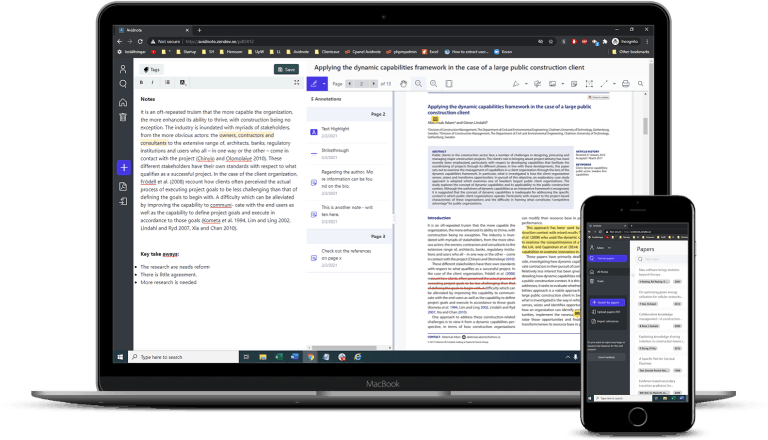The ability to write a well-crafted critique is a highly sought-after skill in academic work. Although some incorrectly perceive a critique as an opportunity to denigrate or ridicule the works of others, on the contrary, a well-written critique can be constructive and advance the original paper.
Below are some relevant considerations when you are either attempting to undertake a critical analysis/review of an article or about to write an article that will undergo a critical review. Each point is formulated as a question.
Are the introductory parts of the paper relevant?
The early parts of an article capture the main message that the researcher intends to convey. The abstract itself has to briefly capture the key aspects of the paper, from beginning to end. Most readers of an article will begin by examining the abstract first so as to have a general overview of what the paper is going to cover.
The article’s introduction section lays the important groundwork for the topic under investigation. It provides a brief description of the relevant concepts and provides the foundation upon which the remaining text is built. Another important component of the introductory parts of a paper is the study’s objective which needs to be clearly and concisely expressed for all readers to comprehend without any confusion.
Perhaps the most important section is the problem statement. It needs to be stated and discussed in a way that the reader can understand the underlying needs/problems that the research paper addresses. Having clearly stated the problem, the research questions and/or hypothesis should revolve around it.
Does the literature review match the subject matter being researched?
It is important that the literature review be organized in a systematic and coherent manner, according to the demands of the article. As a general rule of thumb, the majority of the literature review (and the article as a whole) should discuss contemporary views and citations. If your article is being written in the year 2021, for example, try to cite recent sources (e.g. from the past five years if possible). The definition of what constitutes “recent research” differs depending on the research area; some research subjects tend to change slowly over time whereas others (such as IT) move quickly. Thus, a five-year old paper in the field of organizational science may be considered somewhat recent, whereas a five-year old paper in AI research would be considered somewhat antiquated.
This is not to say that older citations should not be accommodated. Older citations can and should be used sparsely, and may be particularly useful in order to provide the historical background to the contemporary research. The researcher needs to present a balanced critical analysis of the literature that captures different angles or perspectives of the subject matter he or she is investigating. For example, the empirical literature should be broad enough to discuss contrasting findings related to the research topic that support the hypothesis and those that do not.
How appropriate is the research methodology/design?
This is another very important aspect of the research article. It represents a roadmap towards the resolution of the study’s hypothesis by delineating the approach taken to find answers for the initial research questions. A faulty approach can lead to incorrect findings and conclusions. For that reason, the researcher has to critically reflect on the topic that they are studying to come up with a combination of the most suitable ways of collecting, measuring (if the data is quantitative), and analyzing/interpreting the obtained data.
Some pertinent considerations here include the instruments/methods used to collect the data, sample size/sampling technique, validity and reliability measures, and data analysis techniques. The various forms of validation ensure that the instrument is measuring what it purports to measure and nothing else while reliability ensures consistency of the research findings should the study be repeated.
Is the data analysis/discussion of findings comprehensive enough?
Assuming the research methodology is suitable, and the researcher succeeds in measuring all relevant variables, it then follows that the data analysis or discussion chapter must be as comprehensive as possible. Comprehensiveness implies that all key aspects of the problem, research questions and hypothesis should be discussed exhaustively. Likewise, the primary findings of the research paper should be compared and contrasted with findings from previous related studies.
If statistical (and any other) software were used in the measurements, the printouts from such software should be appropriately displayed to aid the analysis. Some of these printouts can also be displayed in the appendix section. The software type and version used for each measurement should be indicated below each printout (e.g., Eviews, version 11).
Does the conclusion capture what has been researched?
The conclusion is a rehash of all the previous sections of the article. It traces the article from the introduction to the discussion of findings. If done correctly, it should read like a summary, highlighting the key aspects of the article, especially the important findings and how they relate to the research problem. Particular care should be taken not to introduce any new ideas in the conclusion phase that are not originally part of the other sections.
How “polished” is the writing style?
This is to some extent governed by individual creativity since every research paper is bound to be different in style depending on the author. The researcher is however expected to organize his/her ideas according to their level of academic achievement. For instance, an undergraduate project is understandably less polished than a PhD thesis.
Whatever the level may be, there are fundamental rules every research article must follow. One such rule is the avoidance of plagiarism. Hence, all ideas that are not original to the researcher must be properly cited to avoid any wrongdoings. Another important rule is ensuring that the article is free from all forms of errors, be they typing, grammar, or punctuation errors. Ideas should be conveyed in a logical order where the proposed arguments clearly follow from the antecedent assumptions that have been made.
All institutions have a formal style guide for writing academic papers (e.g., APA, Chicago, MLA, etc). It is important to strictly adhere to the reference guide provided by the institution or publication.
Conclusion

When writing your research paper, it is essential that all the sections or chapters are meticulously crafted so as to survive even the harshest critical analysis. However, even if you do write a well-crafted research paper or thesis, that will not make you immune to criticism. Finally, and perhaps most importantly, don’t take it personal, it’s only business. Use the criticism to improve your work, and if you believe the critique is unwarranted, be prepared to defend your study using well-crafted arguments.
Write Better Research Notes
Avidnote is our app for writing and organizing your research notes online. It’s free to to use. Click below to find out more.
Read more – It’s Free


